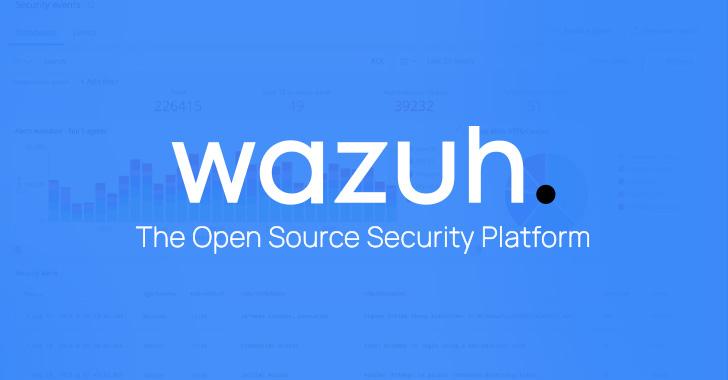
Organizations struggle to find ways to keep a good security posture. This is because it is difficult to create secure system policies and find the right tools that help achieve a good posture. In many cases, organizations work with tools that do not integrate with each other and are expensive to purchase and maintain.
Security posture management is a term used to describe the process of identifying and mitigating security misconfigurations and compliance risks in an organization. To maintain a good security posture, organizations should at least do the following:
- Maintain inventory: Asset inventory is considered first because it provides a comprehensive list of all IT assets that should be protected. This includes the hardware devices, applications, and services that are being used.
- Perform vulnerability assessment: The next step is to perform a vulnerability assessment to identify weaknesses in applications and services. Knowledge of the vulnerabilities help to prioritize risks.
- Ensure secure system configuration: This involves modifying system settings in order to increase overall system security by mitigating risks. Actions such as changing default settings, identifying and eliminating misconfigurations tend to improve organizational security posture.
- Monitor all assets to detect attacks: Additionally, all IT assets should be continuously monitored to detect attacks against the infrastructure. This can be done by monitoring network, system, and application logs for anomalies or indicators of compromise.
The Wazuh solution
Wazuh is an open source unified XDR and SIEM platform. It is free to use and has over 10 million annual downloads. The Wazuh platform has agents which are deployed on the endpoints you want to monitor. The Wazuh agent collects security event data from the monitored endpoints and forwards them to the Wazuh server for log analysis, correlation, and alerting.
The Wazuh platform has several inbuilt modules with the aim of improving the overall security posture of an organization. We have highlighted some relevant Wazuh modules in the following sections.
System inventory
The Wazuh system inventory module gathers information from monitored endpoints where the Wazuh agent is installed. This module collects the following classes of information from the endpoints:
- Hardware and operating system information.
- Installed applications and packages.
- Network interfaces and open ports.
- Available updates and running processes.
Examples of the inventory data collected by Wazuh are shown in the image below:
Information obtained here is later used for vulnerability or threat detection. For example, the version of an installed package can be used to determine whether it is vulnerable or not.
Vulnerability detector
The Wazuh vulnerability detector module is used to discover vulnerabilities that may be present in the operating system and applications on the monitored endpoints. The Wazuh server builds a global vulnerability database from publicly available CVE repositories. This information is cross-correlated with the endpoint inventory data to detect vulnerabilities. An example result of a Wazuh vulnerability scan is shown below:
Detected vulnerabilities are classified into four severity levels namely: critical, high, medium, and low. This helps when prioritizing risks and exposures.
Security configuration assessment (SCA)
The Wazuh SCA module can assess system configuration and raise alerts when configurations fail to meet defined secure system policies. Wazuh has out-of-the-box SCA policies that are used to check for compliance with the Center of Internet Security (CIS) benchmarks. Users can easily write their own policies or extend existing ones to fit their needs. Wazuh SCA policies are written in YAML format which is readable and easy to understand.
Examples of the events generated when the SCA module is executed on an endpoint are shown below:
Each SCA check on the Wazuh dashboard contains information about the configuration that was checked and the remediation steps to harden the system. We expand one of the SCA checks and get the following detailed result:
With the SCA module, we are able to check for misconfigurations and compliance with various regulatory frameworks (PCI DSS, GDPR, and NIST). The compliance checks done by the Wazuh SCA module are crucial for organizations in heavily regulated industries.
Threat detection and response
The Wazuh agent forwards security event data to the Wazuh server for malware and anomaly detection. In addition to this, the agent runs periodic scans on monitored endpoints to detect rootkits.
Wazuh monitoring capabilities are not limited to the Wazuh agents alone. The Wazuh platform provides agentless monitoring for devices such as routers, firewalls, and switches that do not support the installation of agents.
As a unified XDR and SIEM platform, security event data from various security products are forwarded to Wazuh for correlation and alert generation. A sample of the Wazuh security events dashboard is shown below:
It is necessary to take remediation actions when security incidents are detected. Wazuh has the ability to automate remediation actions with its active response module. This is useful in responding to critical or frequent alerts that need automation to reduce the workload of the analysts. For example, an active response script can block an IP address attempting bruteforce on SSH login. Custom active response scripts can be created to execute when certain alerts are triggered.
The takeaway
A good security posture reduces the attack surface of any organization. We have highlighted some of the things to consider in order to achieve a maintain a good posture. We propose a free solution that integrates well with a wide variety of systems, technologies, and endpoints. Wazuh is able to maintain inventory, perform vulnerability assessment, check for secure system configuration, and detect and respond to attacks.
Wazuh is free to use and has a large community of users who support each other and help to improve the product. You can utilize the Quickstart guide to quickly deploy a Wazuh server, or use the on-demand Wazuh cloud service.








